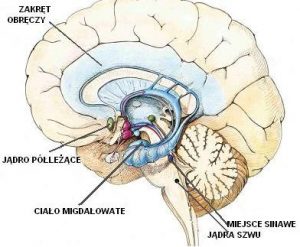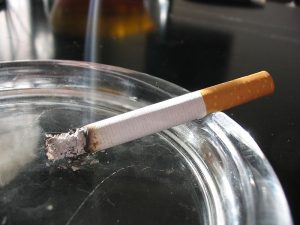Cathinone and methcathinone – little known drugs


Last modified: 03-05-2020
In certain circles probably well known, but for me not until recently at all. Cathinone and methcathinone – how they work, how they are obtained, and the risk of taking them. Anticipating the questions – I didn’t try, I only rummaged in books and the Internet ;)
Both substances are stimulants, such as amphetamine, cocaine and caffeine.
Cathinone
Cathinone is a natural substance found in the plant khat (catha edulis). It is a shrub occurring mainly in eastern Africa and the Arabian Peninsula. Its origin is not entirely known – according to some sources, its homeland is Ethiopia, from where it spread to all of eastern Africa and the Arabian Peninsula, and according to others, the plant comes from Yemen and from there it moved to Africa. It is known, however, that it has been used in these areas for many centuries. Its psychoactive properties have already been learned by the ancient Egyptians.
Chewing khat leaves (or sometimes drinking tea from its leaves) is currently the most popular in Somalia and Yemen. Accurate data varies from source to source, but they all indicate that more than half of the population of these countries at least occasionally uses this substance. According to aztekium.pl in Somalia it is even 100%, while in Yemen 60% of men and 35% of women take khat every day or for a long time. The popularity of this substance can therefore be compared in these areas to the popularity of coffee in Europe. Its use is also popular in Ethiopia, Kenya, Sudan and Uganda. In Europe and the US it is mainly used by immigrants.
In countries where khat is most popular, it is legal to use and grow this plant. It is also the main source of income for most of the population in these areas. The plant does not have high requirements, it is easy to grow and its prices do not change much, which ensures a stable and safe income.
In Europe, both pure cathinone and growing khat are illegal. The exception is Great Britain, where the plant is currently legal, but this is expected to change in July 2014. Until recently it was also legal in the Netherlands. (Note: I wrote this article in March 2014, now I only translated it to English. I will check the current law in free time.)
Structure of cathinone
Cathinone is a derivative of amphetamine, its other name is β-ketoamphetamine. It differs from amphetamine by having a ketone group (CO).
 amphetamine |
 cathinone |
Effects of cathinone
Because of its similarity to amphetamine, cathinone is sometimes called “natural amphetamine.” It also probably has similar effects on the brain (increased levels of noradrenaline and dopamine). The effects after taking cathinone are faster than after amphetamine, but they last less and are half as much. The weaker effect is also affected by the dose. Within 3 – 6 hours on average 100-300 g of khat leaves are chewed. The cathinone content is 30 – 200 mg per 100 g of fresh leaves, as a result of chewing up to 90% of cathinone is extracted, which corresponds to a low or medium dose of amphetamine, but the laborious and slow digestion process limits the dose level.
After taking cathinone, there is an increase in blood pressure, increased heart rate and mydriasis, as well as faster thinking and faster association. Some say it works just like strong coffee. After about 1 – 1.5 hours, a gradual sedation begins, which usually lasts up to about 3 hours, but can last up to 24. During this phase, anxiety, irritability and melancholy are also possible.
In the body, cathinone breaks down into cathine (norpseudoephedrine) and norephedrine. They are very similar molecules – they are their stereoisomers, i.e. they consist of the same atoms, but only spatially arranged differently.

The breakdown of cathinone into cathine and norephedrine also occurs in khat leaves. For this reason, only fresh leaves are suitable for chewing. After 48 – 72 hours, the cathinone content is very low. Cathine is also a psychocative substance, but it has a much weaker effect than cathinone.
Higher doses of cathinone cause very strong thirst, verbosity, loss of appetite and insomnia. Manic behavior, delusions, paranoia, hallucinations, disorders of the nervous, respiratory, cardiovascular and digestive systems as well as aggressive behaviors may also occur.
The effects of long-term use of cathinone are not yet fully understood. Research indicates the possibility of mild depression, mucosal problems, hypertension, cardiovascular complications, duodenal ulcers, liver damage and sexual dysfunction. A lower weight of newborns of chewing mothers khat was also observed. However, the causal relationship of these problems is not confirmed – are they actually caused by chewing khat, or is it just a correlation.
The addictive potential of cathinone is lower than many other drugs, although it is still unknown.
Methcathninone
Methcathinone (ephedrone), called M-Cat, jeff or cat among users, is an artificial substance. The description of the first synthesis is known from 1928. In the 1930s and 1940s, it was used in the USSR as an antidepressant. As a drug it has been known in the USA since the 1990s and in Poland only for a few years.
Structure of methcathinone
As the name suggests, methcathinone is a cathinone molecule with a methyl group (CH3) attached. It is also similar to methamphetamine, as is cathinone to amphetamine.
 metamphetamine |
 methcathinone |
Preparation of methcathinone
Methcathinone owes its popularity to the possibility of obtaining at home from generally available substances. It is obtained from pseudoephedrine, which is a component of over-the-counter medicines for runny nose, which is oxidized to methcathinone. In Poland, potassium permanganate is usually used as the oxidant, which is available in chemical stores. During this reaction, however, manganese also precipitates, which in high concentrations is toxic to nervous tissue. The effects of manganese poisoning can include parkinsonism (symptoms similar to Parkinson’s disease). In the Czech Republic and Slovakia, another substance is reportedly used as an oxidant that does not cause such effects, but I have not been able to find out what the substance is.
Effects of methcathinone
Methcathinone is a norepinephrine and dopamine reuptake inhibitor, thus increasing their concentration in synapses. Its use causes an increase in mood, increased psychomotor drive and motivation to act, talkative and willingness to communicate with other people, improved self-esteem, as well as reduced appetite and need for sleep. Accelerated, shallow breathing, tachycardia, increased blood pressure, mydriasis, dry mouth, polyuria and temporary impotence may also occur.
Among users of forum hyperreal 3/4 admits that they feel after the first phase of stimulation, the “comedown” phase. Its symptoms may include malaise, fatigue, thoughtfulness, depression, nervousness, guilt.
After oral administration, methcathinone effects begin after about 20 minutes and lasts 4-6 hours. After intravenous administration, they are stronger, start faster and last shorter.
In the body, methylcathinone breaks down (reduction reaction) to pseudoephedrine, which is metabolized only to a small extent and is excreted in the urine, mostly in unchanged form.

An overdose of methcathinone can cause distracting headache, hallucinations and feeling of dying.
It is a very addictive drug, tolerance can occur after 3-4 uses.
References:
- Bogdan Szukalski “Narkotyki – kompendium wiedzy o środkach uzależniających”, Instytut Psychiatrii i Neurologii, Warszawa 2005, (38-40)
- Używanie khatu w Europie – konsekwencje dla polityki europejskiej (pdf at emcdda.europa.eu)
- Baza roślin – Catha edulis
- PubChem – cathinone
- Kalix P. “Cathinone, a natural amphetamine”, Pharmacol Toxicol, 70(2), 1992
- Wikipedia – khat
- onet.pl – Przekleństwo Jemenu
- Myślicka, Żuk, Dziurkowski “Uzależnienie od efedronu – opis przypadku”, Psychiatria Polska, 1/2011 (pdf at psychiatriapolska.pl)
- Wikipedia – Methcathinone
- Wikipedia – Metylokatynon
- Forum hyperreal.info
- Piękno neurobiologii – Z apteki na czarny rynek
Source of photo: Ferdinand Reus from Arnhem, Holland [CC BY-SA (https://creativecommons.org/licenses/by-sa/2.0)]
Author: Maja Kochanowska






Add comment